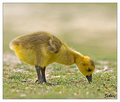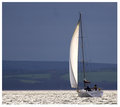| Author | Thread |
|
|
12/25/2009 10:46:49 PM · #1 |
I have taken my 100-400mm lens out for 2 or 3 good outings now, and I am getting some inconsistant results. I had been shooting in Ai Focus for mostly stationary objects and believe this may be slightly to blame, also have been trying to shoot objects that are closer to me then the DOF of the lens allows at the max focal range. I was wondering if you guys may have any pointers or tips, or thoughts on the use of the lens. Like can you use the Image Stablization on a tripod or does it cause camera shake? Or should I really be using a remote shutter release to limit the movement of the lens also?
Thanks in advance for your help. |
|
|
|
12/25/2009 11:00:31 PM · #2 |
| first give it some time it is hard at first to realize just what you are actually trying to do! With a 50mm lens its easy to rip off a few shots and have good focus at a shutter speed of 1/500 or less but at 400mm you are usually looking at a smaller target much farther away, i like to compare it to shooting a rifle,close easy very far and you have to bear down a little!as far as dof goes you should be able to shoot as wide or small an f stop till the lens just will not focus and if you add an extension tube you will be able to get even closer! ai focus ai servo or one shot should all work the same with the lens just the difference in what they are. practice practice practice!!! |
|
|
|
12/26/2009 12:07:52 AM · #3 |
I agree with  rider. When I was new to long lens shooting, the first thing that I noticed was how little camera shake it takes to have a blurry shot. rider. When I was new to long lens shooting, the first thing that I noticed was how little camera shake it takes to have a blurry shot.
DOF is a function of aperture. If you need more DOF, you have to use smaller aperture opening to get that, i/e f11 or 16. Longer shutter speeds or higher iso will be needed to shoot at the same exposure value (EV). The longer shutter speeds will make it even more critical that nothing moves during the shots.
Shooting at 400 mm and 5.6 aperture will give you very shallow DOF.
About AF, if there is something in the foreground area that the lens picks up, like a small tree branch or twig of grass, then it may try to focus on that object.
Put the camera and lens combo on your tripod at night, and tape a laser pointer to the lens so that it shines on a target 50 ft or so away. Trigger the shutter with the self timer and watch the spot on the target. If it jiggles, you will know that your support system is not steady enough. If that is the case, you may want to try shooting with the IS system on, and see how the images compare.
Merry Christmas too.
|
|
|
|
12/26/2009 12:20:30 AM · #4 |
I don't have the same Canon lens, but I have the big honkin' Bigma which is over a pound heavier and probably longer, so I've found some ways to help compensate for things (though I've probably used that lens less than any of my others due to the hassle of lugging it around). Obviously, a tripod should become your annoying tag-along friend. Do not use image stabilization with a tripod. Using a remote will help things too, but isn't as big of a deal as just using a tripod in the first place.
If you don't have a tripod, use sitting positions to stabilize yourself. Familiarizing yourself with various shooting positions for rifle marksmanship will be useful. Cross Ankle Position works alright. Another one that I've used if my subject is in a tree or something is to start off similar to this, but then I bring my right foot and place it on my left hip and set the lens barrel on top of my shin.
In general, I would say that reading and practicing some of the same techniques used in marksmanship will improve your handheld technique, including breath control.
As far as trying to focus on subjects that are too close... you're kinda stuck there unless you slap an extension tube on your lens, and then you'll lose infinity focus anyway... If you have a problem with it happening though, you might try leaving your lens on manual focus and setting it to it's minimum setting and either zoom or approach your subject to achieve focus.
Edited to clarify: I think you're meaning your subject is closer than the minimum focusing distance, which is unrelated to DoF. I may have misunderstood though...
Message edited by author 2009-12-26 00:41:06. |
|
|
|
12/26/2009 12:39:16 AM · #5 |
You do not want to use IS on a tripod, especially with bigger lenses. Theoretically you can do damage to the lens. The way IS works is with small gyros in the lens. The longer the lens, the bigger (and louder) they are. If the lens is locked into a tripod, the gyros will be fighting against it and could potentially do damage (although I've never actually met someone who's damaged their lens in this manner).
|
|
|
|
12/26/2009 12:57:29 AM · #6 |
I generally use a tripod with any lens over 100mm. When shooting handheld though, my shutter speed is at least as fast, as the focal length. So If I was at 400mm, 1/400th would be my minimum. You must be steady. I had an old Camron, yes Camron 500 f 8. Hand held at 1/500th produced usable images. Not an easy task though. Weight and a long day can get to your arms and body. Oh and coffee! lol This is where the IS feature is sweet. But yeah, shooting static objects use a tripod. One shot I find, is more reliable. Used in combination with the center focus point, works well for me. You can lock and then recompose the shot. When using a tripod, Just use a shutter release and don't forget the mirror lock. This combo will give the the crispness you deserve. Plus you can shoot a slow shutter speed, if you desire. Leave the Is for times, when you don't have a tripod. Unless you are panning of course. That can be a fun combo!
I'm a huge believer of tripods, releases and mirror lock. Especially with telephotos and macros lenses. It lets you keep everything the same comp wise. Take the shot, check you focus and depth of field. Then compensate F-stop, or focus if needed . Oh and Knowing, you have the sharpest image possible, is a great standard to set your self. |
|
|
|
12/26/2009 01:04:55 AM · #7 |
When using "reciprocal of focal length" to calculate minimum handheld exposure time, be *sure* to use the equivalent focal length for your cropped sensor; that is to say, your 400mm is 640mm on your 40D, and you need like 1/640 exposure time to be in the ballpark for hand-holding.
R, |
|
|
|
12/26/2009 05:08:27 AM · #8 |
First things first - this is a great lens. It is big and quite heavy, but it is also pretty forgiving - so for instance while all the technical advice here is sound, I always handhold mine and have got shots that were as slow as 1/80 that are crisp and sharp.
I am getting some inconsistant results. I had been shooting in Ai Focus for mostly stationary objects and believe this may be slightly to blame
I agree - 'One Shot' AF will always give you sharper focus on a stationary object than Ai Focus - and to be honest I'm not 100% convinced on Canons Ai Focus anyway. Single shot would be a lot better for you. Heck I sometimes take moving objects on Single shot . .
also have been trying to shoot objects that are closer to me then the DOF of the lens allows at the max focal range.
Not sure what you mean here ? If you focus on someting cleanly, then the object should be in focus regardless of DoF. Maybe not as much of the object as you had first planned for i.e. you might just get the eyes and not the whole head, but you should still be in focus on the specific focal point.
Like can you use the Image Stablization on a tripod or does it cause camera shake?
No - as has already been mentioned :- )
Or should I really be using a remote shutter release to limit the movement of the lens also?
You can do - especially if you are using a tripod and want it as still as possible - but you will be limiting yourself if you just use this lens with a tripod, it's way friendlier than that. Take it out on single shot AF, reasonable shutter speed, and have another play.
Hand held at 1/80 
All of these are also handheld (along with virtually all my other shots)
   
|
|
|
|
12/26/2009 07:01:07 AM · #9 |
Originally posted by Jedusi:
 |
Heh, I always refer people to this image when they are asking about this lens.
To add to what Jedusi said - when using this on a tripod make sure you turn off the IS, I believe Canon recommend it be turned off when using a tripod - not sure why though - anyone back me up on that one? |
|
|
|
12/26/2009 08:18:38 AM · #10 |
One other thing that no one has mentioned, and I don't think it will make any difference, since you are using AF, is to make sure that the diopter setting in your camera is matched for your eye that you focus with. My left and right eyes are different, so I have to be careful to not use my left eye for focusing manually.
|
|
|
|
12/26/2009 08:43:53 AM · #11 |
Originally posted by MelonMusketeer:
Shooting at 400 mm and 5.6 aperture will give you very shallow DOF. |
This is not true. Your depth of field is also dependent on your distance to the subject. If you are 20 feet away from your subject, you will have a very shallow depth of field. If you are 200 feet away from the subject, you will have a much much larger depth of field. You also must keep in mind the hyperfocal distance capabilities of your lens.
I have used my 100-400 extensively. One thing to really pay attention to is your shutter speed. It is really easy to forget... Regardless of the zoom, I can shoot handheld down to about 1/400, with a monopod, 1/250. What affects the shot more is my distance to my subject. If I am shooting at the extreme long end of the lens at a subject 25 feet away, my shutter speed has to be faster than shooting the same subject from 250 feet away.
A quick and easy DOF calculator (Remember to use the equivalent focal length, as Bear pointed out).
Simple explanation of hyperfocal distance. |
|
|
|
12/26/2009 12:47:58 PM · #12 |
On this lens, if IS is on when the camera is mounted on the tripod, you can see very clearly the movement in the frame (by the IS) as adjustments are made for any type of movement. This is especially noticable if there is a slight breeze and moreso at the long end of the lens.
Message edited by author 2009-12-26 12:48:22. |
|
|
|
12/26/2009 01:19:15 PM · #13 |
Wow, Thanks everyone for the awesome tips and information. They are GREATLY apprecitate all of them. I have got a lot of information to try now when i go on my next 400mm adventure. I normally do use a tripod for everything, regardless if im at 10mm or 400mm, just seems as though with the 400 attached the hand I press the shutter with gives slightly more shake to the camera than it does with the 10mm on it, though this could just be perception. I think i will get the timer and try it out.
Thank you to all who answered the IS on the Tripod question, I will be sure that I have my IS off on the lens whenever its stuck on the tripod.
To try and clarify my DOF statement, I was trying to say that the The apreture that I was using on my camera and the overall distance to the focal point was giving a DOF value that was very low (Total DOF:0.21 Feet) and so not getting everything I wanted in focus and trying to say that I kinda understood why this was happening.
Thanks again to all who commented in this thread, I am hoping(someday) to pull off some great picts like  Jedusi has referred to, and always want to use what I got to the best of its ability and dont want to be the weakest link in that whole setup. Jedusi has referred to, and always want to use what I got to the best of its ability and dont want to be the weakest link in that whole setup.
Thanks again and happy holidays everyone. |
|
|
|
12/26/2009 02:16:56 PM · #14 |
1 other thing to check and give you a little practice, mount everything up and shoot a dollar bill on the wall in your house at f/5.6 at about 20 feet and see how your immage looks this will give you a chance to check for your movement and also to check the sharpness of the lens, when i first got mine i sent it back to canon as it was not very sharp in this test and when it came back i was very happy they adj. it and it was much sharper!
ps the adj. was free as i had just bought it only had to pay to ship to them
Message edited by author 2009-12-26 14:18:30. |
|
|
|
12/26/2009 02:43:22 PM · #15 |
Originally posted by dahkota:
A quick and easy DOF calculator (Remember to use the equivalent focal length, as Bear pointed out). |
Focal length multiplier is immaterial to DOF. DOF is a function of physical diameter of the aperture, and that doesn't change when accounting for the multiplier. Multiplier is, in effect, a crop, nothing more or less.
R. |
|
|
|
12/26/2009 04:53:13 PM · #16 |
Originally posted by Bear_Music:
When using "reciprocal of focal length" to calculate minimum handheld exposure time, be *sure* to use the equivalent focal length for your cropped sensor; that is to say, your 400mm is 640mm on your 40D, and you need like 1/640 exposure time to be in the ballpark for hand-holding.
R, |
I'm thinking about this and wondering if it's actually true. Does cropping an image increase the handheld blur? Thinking about things like this makes one's head hurt. |
|
|
|
12/26/2009 07:51:44 PM · #17 |
Originally posted by DrAchoo:
Originally posted by Bear_Music:
When using "reciprocal of focal length" to calculate minimum handheld exposure time, be *sure* to use the equivalent focal length for your cropped sensor; that is to say, your 400mm is 640mm on your 40D, and you need like 1/640 exposure time to be in the ballpark for hand-holding.
R, |
I'm thinking about this and wondering if it's actually true. Does cropping an image increase the handheld blur? Thinking about things like this makes one's head hurt. |
i wouldn't think so a sharp immage is a sharp immage the crop wouldn't matter longer focal length does though, i put a 2 and 1.4 on the 500mm and if i have the legs on my tripod fully extended mirror slap will give it a little blur! |
|
|
|
12/26/2009 08:12:25 PM · #18 |
Originally posted by rider:
Originally posted by DrAchoo:
Originally posted by Bear_Music:
When using "reciprocal of focal length" to calculate minimum handheld exposure time, be *sure* to use the equivalent focal length for your cropped sensor; that is to say, your 400mm is 640mm on your 40D, and you need like 1/640 exposure time to be in the ballpark for hand-holding.
R, |
I'm thinking about this and wondering if it's actually true. Does cropping an image increase the handheld blur? Thinking about things like this makes one's head hurt. |
i wouldn't think so a sharp immage is a sharp immage the crop wouldn't matter longer focal length does though, i put a 2 and 1.4 on the 500mm and if i have the legs on my tripod fully extended mirror slap will give it a little blur! |
Right. But putting an extender on a lens increases the actual focal length, while using a cropped sensor increases the effective focal length (by effectively cropping the picture). Does hand motion treat the two as the same? I don't know the answer, but my instinct says no. I could easily be wrong though. |
|
|
|
12/26/2009 08:14:16 PM · #19 |
Originally posted by DrAchoo:
Originally posted by Bear_Music:
When using "reciprocal of focal length" to calculate minimum handheld exposure time, be *sure* to use the equivalent focal length for your cropped sensor; that is to say, your 400mm is 640mm on your 40D, and you need like 1/640 exposure time to be in the ballpark for hand-holding.
R, |
I'm thinking about this and wondering if it's actually true. Does cropping an image increase the handheld blur? Thinking about things like this makes one's head hurt. |
I think that cropping the image may not increase the handheld blur. But you are also inlarging when you view(compared to ff). Sharpness is really about appearance and when you inlarge it, it makes it appear less sharp. now my head hurts too. |
|
|
|
12/26/2009 09:02:18 PM · #20 |
Originally posted by DrAchoo:
Originally posted by Bear_Music:
When using "reciprocal of focal length" to calculate minimum handheld exposure time, be *sure* to use the equivalent focal length for your cropped sensor; that is to say, your 400mm is 640mm on your 40D, and you need like 1/640 exposure time to be in the ballpark for hand-holding.
R, |
I'm thinking about this and wondering if it's actually true. Does cropping an image increase the handheld blur? Thinking about things like this makes one's head hurt. |
Think in terms of angular deviation. Let's say, for the sake of argument, that your shaky hands cause a 1-degree range of movement when hand-holding the camera. Now let's suppose the lens you have mounted has a 10 degree field-of-view. Your camera shake is 10% of the FOV, a huge amount. But do it with a wide-angle mounted that has, say, a 120-degree FOV, and the deviation is less than 1%.
So in the full-frame, uncropped wide view the shake would not be particularly noticeable, though still there and perceivable if you looked for it, especially under extreme enlargement; and THAT would be just like cropping the image, which is just like a crop factor, see?
The other element, of course, is over what timespan the shake takes place. That's the point of the shutter speed, to freeze the shake. And the more magnification you're using, essentially, the more you have tp freeze the shake to get a semblance of sharpness.
Trust me, it's a fact. The narrower the field of view, the faster the shutter speed you need to cancel the effects of shake.
R.
ETA: this works for "the larger the print" too; blowing 'em up big is just like cropping 'em at a normal size. see? And then THAT is altered by the viewing distance; a billboard may *look* sharp as you drive by yet be anything but if you get real close. Your thumbnail may look great, but your 800-pixel upload may look grievously blurry. It's all relative...
Message edited by author 2009-12-26 21:05:58. |
|
Home -
Challenges -
Community -
League -
Photos -
Cameras -
Lenses -
Learn -
Help -
Terms of Use -
Privacy -
Top ^
DPChallenge, and website content and design, Copyright © 2001-2025 Challenging Technologies, LLC.
All digital photo copyrights belong to the photographers and may not be used without permission.
Current Server Time: 08/08/2025 10:44:03 PM EDT.

